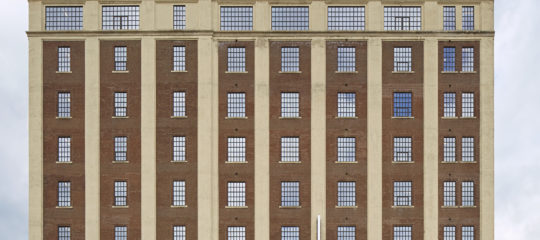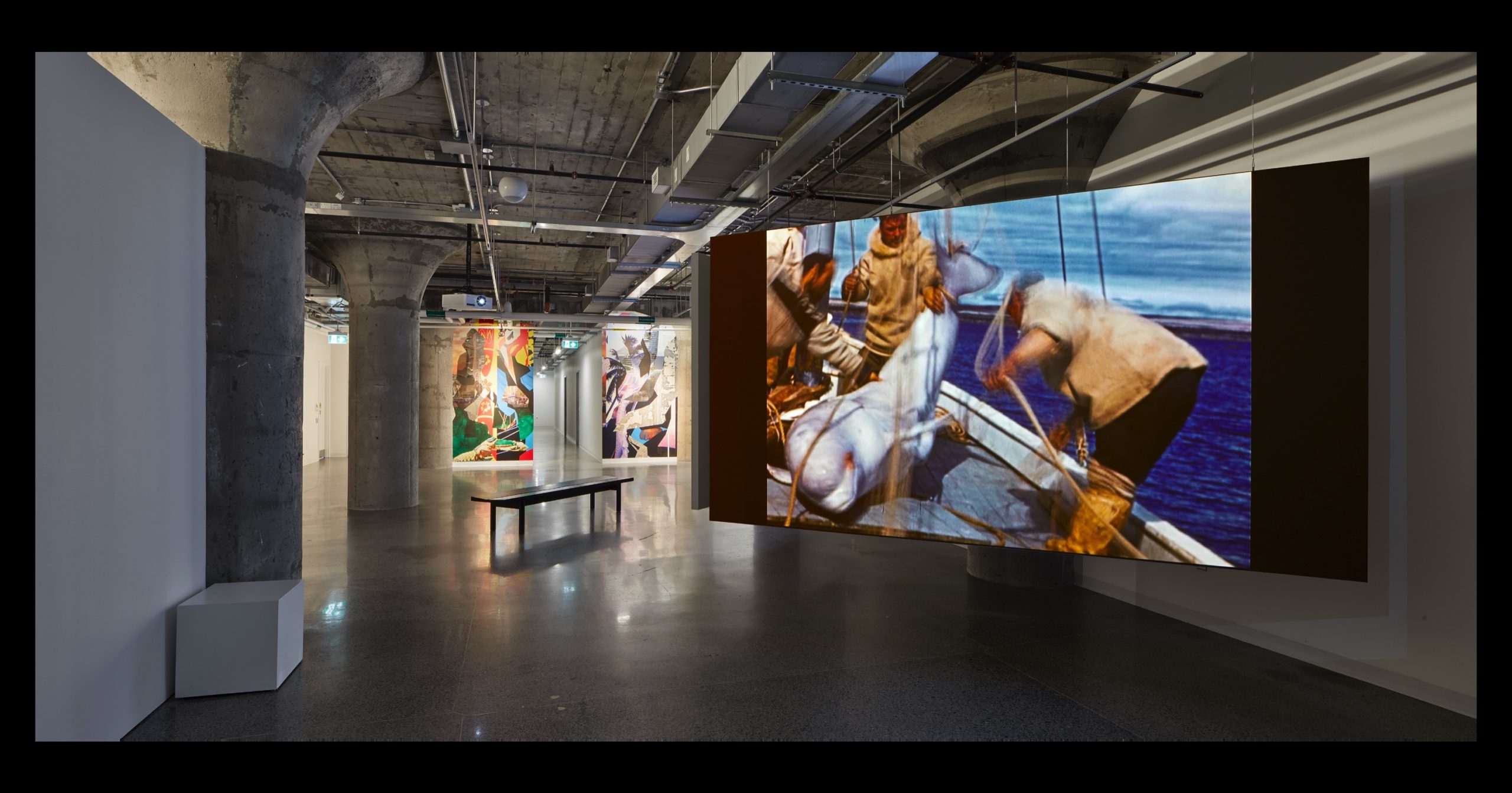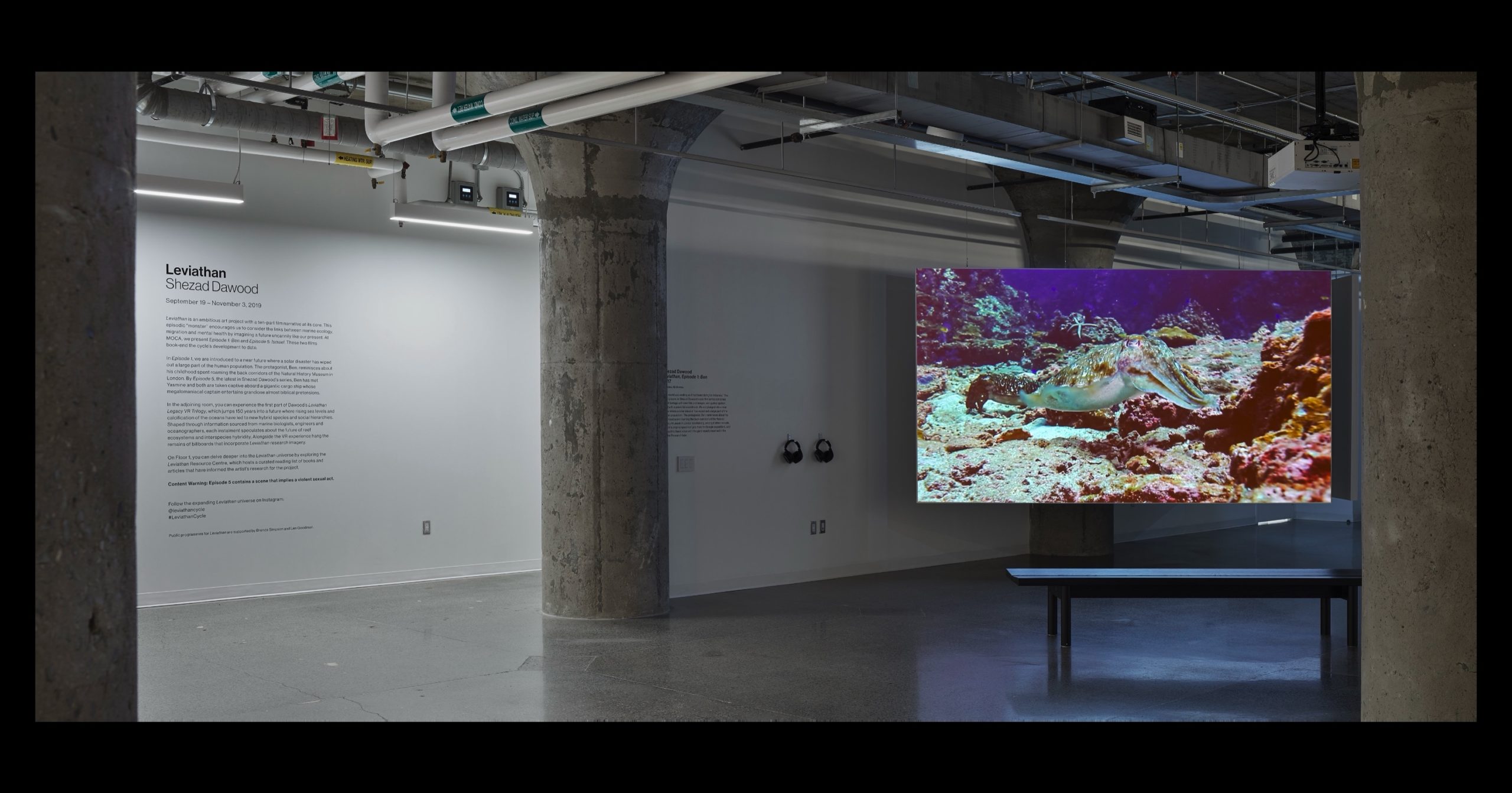September 21 – December 1, 2019
Episodes 1 and 5 of Leviathan Cycle, Dawood’s expanding video series, are on view at MOCA. Against the backdrop of a cataclysm, the videos traverse territories and themes, interrogating colonial and Indigenous politics. Alongside them, Part 1 of the Leviathan Legacy VR trilogy delves into a future 150 years ahead that is irreversibly altered by climate change. The cycle continues in the most recent episode of Leviathan, Episode 5: Ismael. The project has involved marine biologists, oceanographers, political scientists, neurologists, and trauma specialists to envisage a future very much like our present to consider possible links between borders, mental health, and marine welfare.
Episode 5 of Leviathan Cycle is co-commissioned by Fogo Island Arts, MOCA, A Tale of a Tub (Rotterdam), and the Toronto Biennial of Art, and made possible with generous support from the British Council. It is on view September 19 – November 3. For more information, please visit museumcontemporaryart.ca.
Bio
Shezad Dawood (born and lives in London, UK) uses research and collaboration to inform his interdisciplinary work. His key concerns with marine ecology and the ethics of place recur across different projects including Leviathan (2017–): a multi-media work and public program. Both open-source resource and artwork, Leviathan is informed by biologists, oceanographers, and anthropologists to address climate change, migration, and mental health. Dawood’s works have won awards at biennials and film festivals, and his work features in collections including: LACMA, Los Angeles; Tate Modern, London; and British Museum, London.
Exhibition Site
Museum of Contemporary Art Toronto (2019)
The Museum of Contemporary Art Toronto Canada has been active for more than twenty-five years in the city. It currently spans five floors of the Tower Automotive Building at 158 Sterling Road in the Lower Junction, a neighbourhood currently undergoing substantive residential and commercial redevelopment, and formerly a principal centre of manufacturing and railway transit in the city. Erected in 1919, the building was at the time the tallest building in Toronto and operational until 2006. With its distinctive, concrete flat-slab architecture--considered innovative at the time of its opening—has been retained throughout the recent renovations.

158 Sterling Rd
Toronto ON
M6R 2B7


